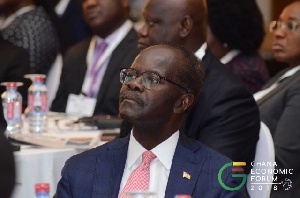June 26th 2010
[IMANI's latest situation brief will come out this week, and shall be published on the IMANI site, AfricaLiberty.org and in selected media. The brief, *IMANI Special Report on Agriculture: the Fertiliser Value Chain in Ghana*, with a focus on the fertiliser distribution situation in the country, shall focus on objective reporting of the key trends, and leave policy recommendations for a later treatment.]
From the point of view of agricultural productivity, Ghana’s abysmally low use of fertiliser is alarming, to say the least.
We were unable to obtain sufficient data to assess progress on a commitment made by the COCOBOD in March 2009 to expand the acreage of fertilised cocoa farms to 400,000 hectares, but we note that even should this goal be totally accomplished, at least 70% of total cocoa acreage would remain unfertilised. Nor is it clear if the COCOBOD’s belief that the result would be a doubling of productivity in the cocoa growing regions to 1 metric ton per hectare is completely grounded in observable fact.
We also note that notwithstanding the reintroduction of the fertiliser subsidy in 2008, after several years of absence, for the four most widely used fertilisers in Ghana: NPK 15:15:15, NPK 23:10:05, Urea and Sulphate of Ammonia, the fundamental problem of low productivity continues to persist, although the Ministry of Agriculture believes that it has stemmed the rate of decline of productivity.
We acknowledge however that the $30 million subsidy regime was introduced during a period of substantial spikes (amounting to about 45%) in the price of the most widely patronised fertiliser in Ghana, NPK 15:15:15 (to $24 per standard retail bag), and must have thus been partly intended to address the effects of that spike.
But it is not the cash crop sector, where cocoa is the kingpin, that offers the greatest cause for concern as far as fertiliser use in Ghana is concerned. The situation in the food crop sector is, for obvious reasons, much more urgent, with less than 15% of cultivated acreage under fertilizer (according to the latest, most rigorous, data we could find). An observer has summarised the situation as follows: “Currently, five or six bags of fertilizer are used per acre in southern Ghana with two or three bags an acre in the North. As prevails in other sub- Saharan countries, there must be an increase to between ten and twelve bags per acre.”
There has however been a sprinkling of good news lately. Some reports suggest that maize farmers who have benefitted from the Government of Ghana’s subsidised fertilizer regime managed to increase output by 25% to 6.5 tonnes per hectare. Even more optimistic reports have come in about some rice farmers who have apparently broken through the 6 tons per hectare barrier (double the usual productivity rate).
Such reports have grown more legs following results from controlled, limited, trials by private companies such as Yara Ghana, a major private sector distributor of fertiliser, which has reported a 5.5 Metric tonne per hectare (MT/h) outcome from its trademarked ACTYVATM (layered with urea) in the Volta region for irrigated rice production. Yara also markets products such as YaraLEGUMESTM for soybeans and groundnuts, and YaraLiva NITRABOR for fruits and vegetables, clearly in keeping with a marketing trend of fertiliser differentiation for different crop targets.
One must however be careful in distinguishing between promotional hype and serious, credible, studies, even if sponsored by commercial concerns. And, of course, governments are not entirely innocent of the hype charge either.
In that light, it is interesting to see other reports suggesting a significant incidence of negligible increases in output in the wake of fertiliser introduction. The main explanation adduced for this paradoxical result has been inefficiencies in the coupon distribution system (the mechanism introduced to administer the 2008 fertiliser subsidy regime) which on occasion prevents farmers from assiduously following the fertiliser application regime at the same time as Agricultural Extension Officers complained of a low voucher redemption rate (50% at the end of the initial phase).
This low-yield response situation has been especially prevalent in Northern Ghana where nearly half of all farmers benefitting from the subsidy regime reported similarly discouraging results. A curious affair, seeing that the number of farmers using fertilisers have tripled to 90,000 between 2006 and 2010 in the region, and the redemption rate for vouchers was highest in this same part of the country.
At any rate, the Ministry of Agriculture has recently reported a termination of the coupon system in the management of the fertiliser subsidy regime. While this is consistent with some of the above-cited negative assessments of the coupon program, we are sceptical of the new policy introduced by the Ministry, with its reliance on control pricing. The truth is that controlled pricing was not successful in the past and is unlikely to prevail in the future.
There are deeper issues involved, for which reason comprehensive responses are more likely to yield durable benefits than the quasi-socialist approach recently adopted by the Ministry.
Professor Asenso Okyere once summarised the root causes of the inadequacies in the fertiliser regime for the International Institute for Agricultural Development as follows:
“low participation of the private sector in the fertilizer privatization scheme can be attributed to a number of reasons including declining primary demand due to increased prices; accumulation of large stocks in the warehouses of the Ministry of Agriculture; the continued participation of public sector organizations in fertilizer retailing, the low margins instituted by the government, lack of training for retailers in handling the specialized product; absence of credit to meet the large capital outlays needed to acquire a few tons of fertilizer; and the initial pan-territorial pricing policy.”
We are inclined to side with the renowned Academic on the issue of the private sector’s critical importance to the process of rationalising the fertiliser market in Ghana. But for the private sector to assert itself in this market, there is a need for an environment that allows for the prudent and effective management of risks.
As the Alliance for a Green Revolution in Africa (AGRA) put it: “...the risks associated with the fertilizer business include production and handling risks; inventory, storage and environmental risks; market, price and credit risks; transport and policy risks. Whether from external or internal sources, the risks along the fertilizer value chain must be identified so risk management and mitigation plans can be developed.”
The current policy of Government of Ghana to emphasise controlled pricing rather than incentives to the private sector (apart from the minor duty exemptions and other port-related flexibilities announced recently) may seriously affect the viability of private sector participation in the fertiliser trade by undermining efficiency-inducing market forces. In an upcoming study, we aim to provide a mixture of policy recommendations to address the imperfections we perceive in the current policy stance of the Ministry of Agriculture.
*For the Full report, visit: www.AfricanLiberty.Org later this week.*
* Courtesy of IMANI Centre of Policy & **Education, in collaboration with AfricanLiberty.Org*












